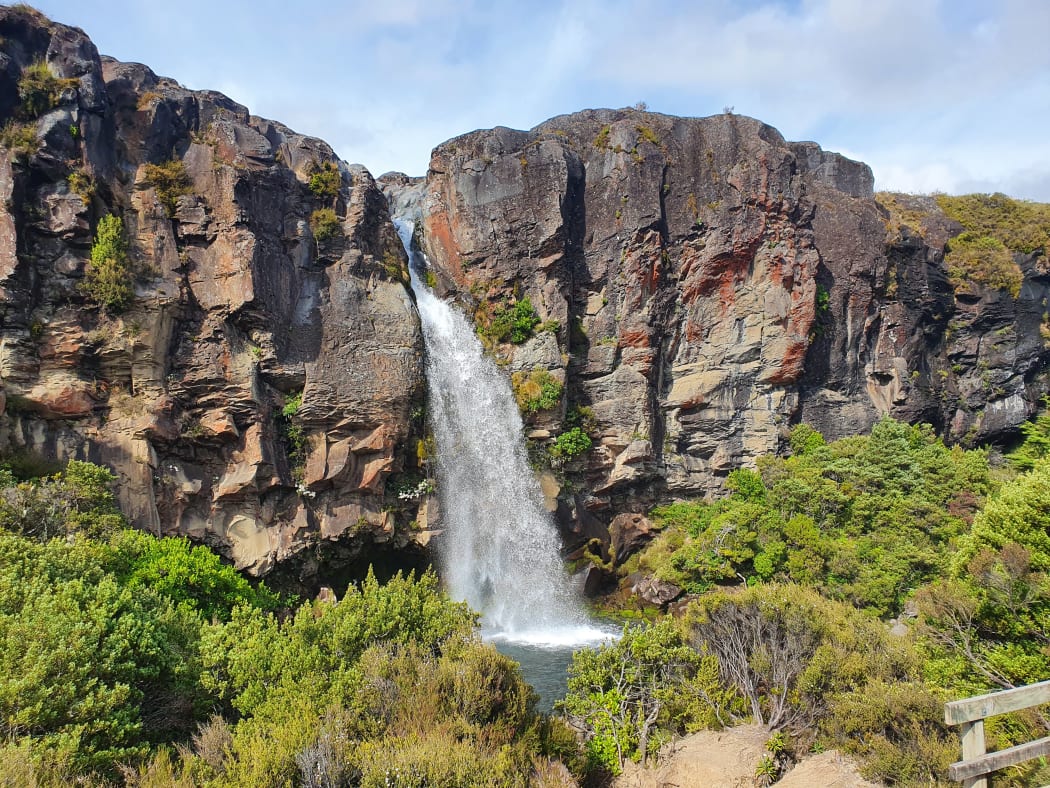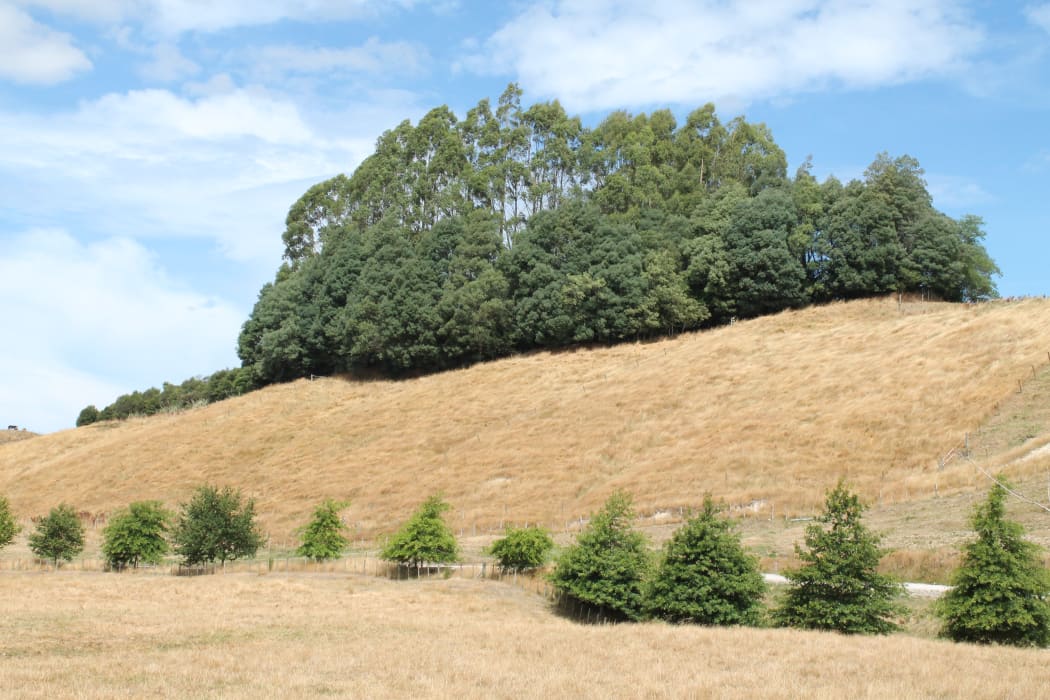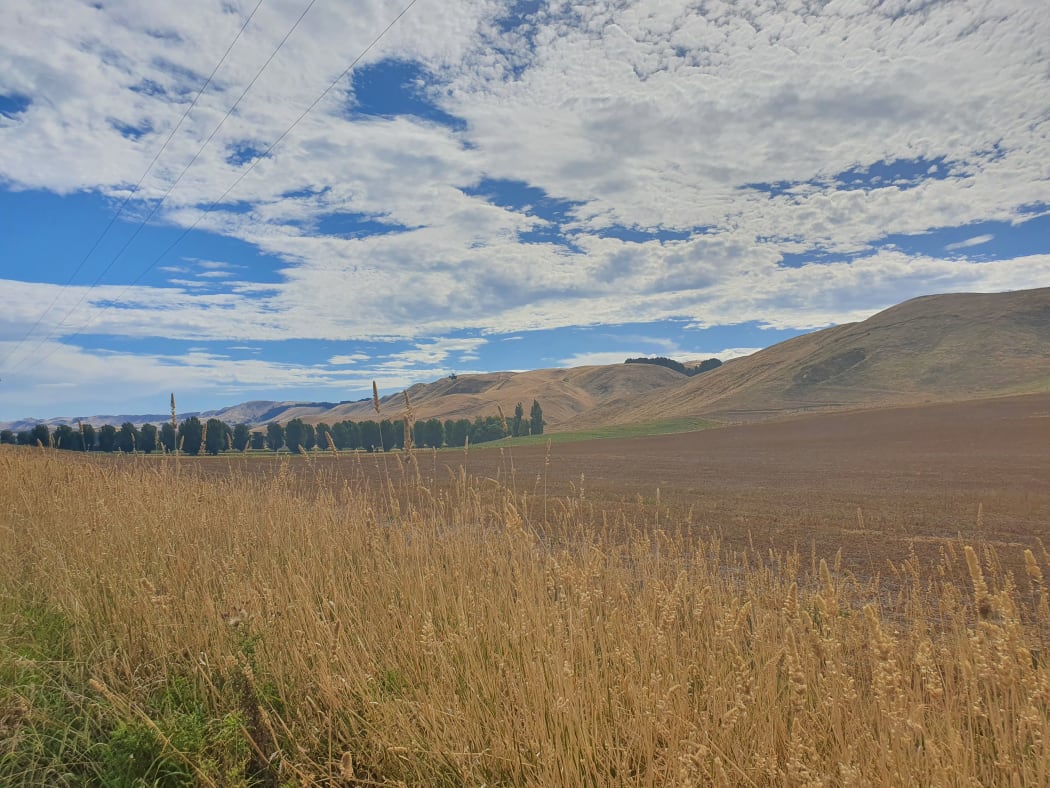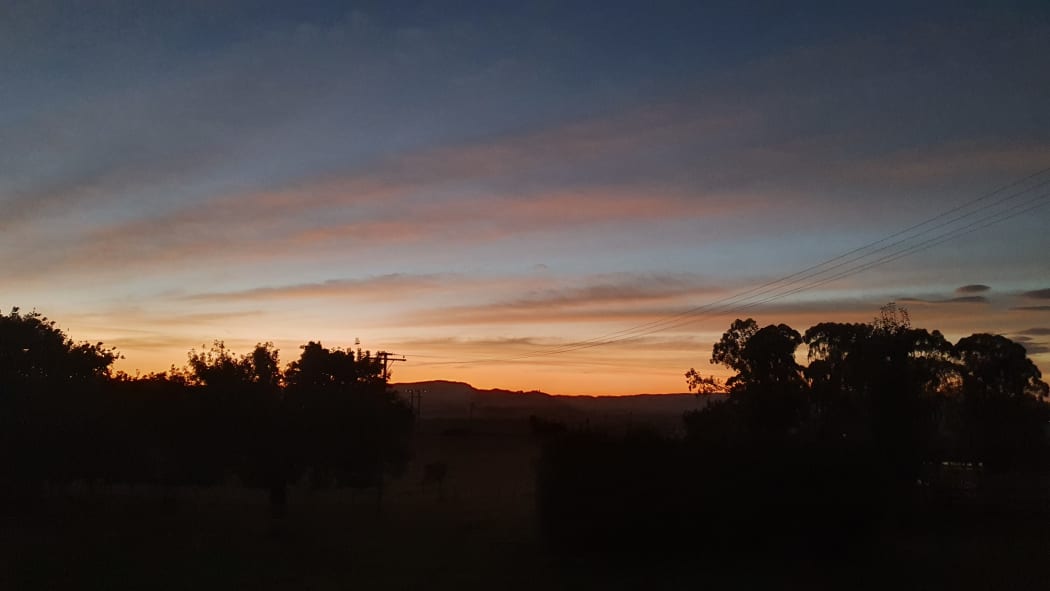Waikato is teetering on the edge of a drought and grape crops are looking bountiful in Marlborough. Listen to On the Farm for more on conditions on farms and orchards around the country.
The stock agent we called in Northland says he's been told the region is the greenest in the North Island at the moment. However he says it doesn't take much to keep the kikuyu green. There've been localised downpours and the odd shower here and there. It's been windy. The west of the region is drier than the east. When dairy herds come onto the market they are selling well - cows are fetching $1800 to $1900.
Pukekohe still needs rain. Machine harvesting of onions is very dusty work. Because it was so dry as the crop matured, there are many small onions and all have generally thin skins. Grey Crown pumpkin are maturing and are being harvested. Unfortunately leafy greens have had a hard time coping with voracious caterpillars. Bok choy has suffered the most damage.

Taranaki Falls, Whakapapa Photo: RNZ/Carol Stiles
Waikato is teetering on the edge of a drought and a good 100 millimetres-plus of rain is needed to get things back on an even keel. It's been hot and the grass is not growing ... fingers are crossed for rain on Sunday and Monday. Farmers are feeding out a lot of supplements. Milk production is slowly trending down. A number of maize crops are starting to suffer. Farmers are facing significant delays in getting stock killed - if Omicron gets into the works, that would seriously affect things.
King Country is struggling in the dry too. It's had 36 days of no rain then just a miniscule amount about ten days ago. A sheep and beef farmer was just heading out to check his stock had enough water and weren't getting bogged down on the edge of drying dams. He says they're ok as long as they have shade. There's enough tucker on the hills - a lot of long rank grass - to keep them going. Dairy farmers are feeding out palm kernel and baleage. Sheep are being drenched, fences patched and blackberry's being sprayed.

Pasture near Taupo Photo: RNZ/Carol Stiles
In Bay of Plenty a farmer was drafting lambs when we called, taking a few of the top ones out to send to the works. Luckily he's been able to get some of his stock away but others are not so fortunate. The dry is affecting feed quality and it's becoming a big issue for everyone. Drizzly showers have been teasing the region over the past couple of days and a decent downpour is needed.
A breeze from the nor'west was blowing in Taranaki on Friday morning. Nor'westers used to bring rain in the old days, an old timer told us, but these days not. The winds have dried things off and feed quantity has diminished considerably in the past week although quality is still sound. Quite a bit of supplementary feed is being pushed out.
In the Gisborne area pasture covers have dropped. They've been very lucky to date. At times this summer, most of the region has dipped below optimum soil moisture but then rain has come at the right time to top things up. In the next few weeks, though, they're going to hit a dry patch. There's still clover underneath the browntop. Lamb percentages are looking really good - lots of twins, but then lots of mouths to feed.

Hawkes Bay Photo: RNZ/Carol Stiles
Hawkes Bay is brown but not worryingly so. You have to be careful on slopes if there's long, slippery hay-type grass - they call it "summer ice". The farmer we called says his farm, near Crownthorpe, had 12 millimetres of rain last week and more is forecast for the weekend. He's just about to start weaning 1300 calves. He says his maize crop is "unreal" this year and he's been able to get three cuts of lucerne. Come the beginning of March he expects to have 6,000 tonnes of silage in the pit. He says it sounds a lot, but when it was very dry last year he was feeding out 40 tonnes a day and "she doesn't last long" at that rate.
It's also been hot and dry in Manawatū. They're crossing fingers and toes for rain this weekend. Farmers aren't in dire straits just yet but they need pasture growth to give them options. But February's always on a knife edge. Getting shearers and truck drivers is a major problem and, as far as the easing of entry for critical workers from overseas goes, a consultant says farmers will believe it when they see it.
Wairarapa dairy farmers are on the look out for facial eczema. Some areas have had rain but it is starting to dry out. And it's been hot! A lot of shearing is going down on hill country farms. The biggest struggle is getting cattle and ewes off to the works here too. Nets are going on in vineyards. The grape crop is looking bountiful.

Sunrise over South Wairarapa Photo: RNZ/Sally Round
There's been between five and 50 millimetres of rain across the Nelson Motueka region this week. The apple grower we called says picking will start in about a week's time. The new Smitten variety, Cox and Royal Galas are the first cabs off the rank. He says it's virtually impossible now to find seasonal workers apart from the RSE staff he already has at his Motueka orchard.
There's been no rain on our contact's hill country farm near Blenheim in Marlborough. But thanks to a productive spring there's still a good amount of feed on the ground for stock that are on slow rotation. Ewes are first and cattle are cleaning up behind them. In vineyards, the Sauvignon Blanc variety's approaching veraison, or the onset of the ripening stage, so rain's the last thing grape growers want now. Crop yields are looking good though with harvesting only six or seven weeks away.

Photo: RNZ / Cosmo Kentish-Barnes
Out contact at Harihari on the West Coast says about 300 millimetres of rain has fallen over the past three days. He says much more rain's fallen further south and north. Before the rain the area was very dry. In fact he reckons it was the driest season since he's been farming, so the moisture's actually been welcomed. He's been TB testing his herd this week and before the wet he was spreading lime on paddocks. Cows are on once-a-day milking now and production's on par with last year.
The wet cool weather continues in Canterbury. While good for grass growth, dairy farmers are reporting reduced milk flow. For cropping farmers it's making harvesting very difficult and slow. The risk is, if the wet weather continues, quantity and quality of seed produced will be dropping rapidly. Crops harvested so far are very average in terms of yield.
So far, a South Otago dairy farmer near Balclutha has recorded 35 millimetres in the rain gauge since Wednesday. It's come just at the right time too as the ground was starting to crack in places. He says it's also washed insects off his crops. Aphids in particular have been hammering the swedes. He says milk production is up markedly due to the high energy crops he put in and the cows are in great shape and loving the rain after some very hot days.
Some rain this week in Southland has been greatly appreciated by farmers. A farmer in the Blackmount Valley says it's helped the crops to stand up and have a look around. He's been busy shearing lambs this week for flystrike. The wool is about 30 microns and even though prices are up about 50 cents a kilogram on last year it still doesn't cover the shearing costs. Baleage is still being made and barley and oats harvested. The oats will be used as stock feed over winter.

